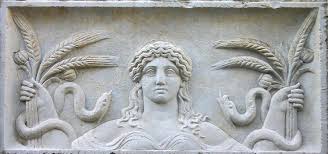I was looking through old files, and found poems, poems from people whose names I have lost, poems from people who left me their beautiful moments in poetry of one shape or another, and then were somehow lost, like footprints disappearing along a beach, in the time stream. I have lost their names, I am sorry to say, they have become unamed, even un-faced, in my own particular stream - but here they are, their moments remaining, like touchstones. Some of these poems, on old typewritten paper or even the lined pages of a notebook, just have a first name. Most, not even that. Should I be ashamed to share here what was so generously given thus? So I felt like dedicating this post to those poems from the Lost. And if the names thereby surface again, by any chance, that would be good indeed. I am sorry I have lost your names, but with age, it seems the names go out of things.
Perhaps, it is time to un-name things anyway, and find new names closer to the fragrance of who we are or were. Thank you once again for the pentimentos that remain.
Anenomes
At this shoreline
there is no visible
bridge to cross
the anemones of love
are opening, closing
opening, closing
half-visible
in waters below
you must take the leap
....?
It was only
three strands of
hair
falling across an
eye half closed
a flash of green
light
a curtain of eyelash
a snapshot
in my
memory book
where you still live, the moment
unlost,
expanding,
weightless
.....Darren
Losing Her
Way Back Home
I want to still be that girl
with
Cottonwood leaves caught in
The damp rope of her
undeniably
Red hair while she dances so
hard
The whole day stops –it just
stops-
To stand brilliant and
razor-edged
Around her long brown body
Writhing so close to the
ground that
Her hands and hair caress the
earth
She is holding onto lust,
life and fire
Even as it all sifts and
spills
Through her wide open
fingers.
Down here in the riverbed,
A dry heat is burning my skin
To parchment and clay. I
chain-
Smoke stolen cigarettes and
Mumble the words to a song I
Once heard on your pickup
truck
Radio when it was tuned to
only static
Except for that beat: the
pound
Of dirty feet against the
dust
That was rolling up in clouds
Around us, the sudden vision
Of human bodies urging the
Earth towards orgasm. The
Spirits of animals walking
Towards the dancers with
The intention of union,
Singing a song with the sound
Of wind-filled bones and
Skin drums: heartbeat/
Bodybeat in the lucidity
Of a circle filled with
light.
You wearing golden feathers
And calling out to me until
I gave life to the dance and
matched
The rhythm struggling to
emerge
From those half-busted
speakers
And I sang words as bright
And hard as the desert we
drove
Across at not-so-high
Speeds taking in the stars
Like a drink, like something
We could become drunk upon
Exploded into something
Less than fragmented
Until we were lit up
And glowing volcano-
Red in the August night.
But tonight, the world is
Darker and much less alive;
you
Are long since gone and the
dance
Circle is nowhere in sight. I
am
Just a girl with crow
feathers
In her red hair, crouching in
the
Remnants of a dried up river
Alone and aching for a song,
A drink, a dance partner
And the sound of a hundred
Barefooted bodies still
making
Insatiable love to the
ground.
.....?

.....?

The
Game
The
big bang was a sigh,
God
wistful for a playmate,
bored
of being and looking
for
action.
I
remember God as chubby
from
eons lounging
on
the ein sofa, a bit mad
from
an infinity
of
doing nothing.
He
made me just after finger painting
a
binary star; this forever colored me
in
shades of two, as if being One
wasn't
hard enough.
I
divided: One half hurtling
to
frontier reaches, the other
curling
into a universe
no
bigger than dust.
The
game was to find
each
other across the vastness,
space
and time
our
playground.
When
we met
in
the billionth year,
we
traded discoveries
and
tales, gifts
of
blue feathers, a red stone,
arrowhead
and a chain
of
stars.
The
real prize: In your arms
In
my arms, Home.
....Lori
If I were to write a
poem for you
I can tell you what
it would not be
I would not include flowers
too sweet with
immanent decay
no forevers, or deadly promises,
or worse plans for
Where We Go From Here.
I would say just
this:
your fire ran across
my thigh
it burns there
still.
You have left your mark.
For a moment,
we
took that flame
in our mouths,
and passed it, one
to another:
and we
were warmed by this,
made bright.
If I were to write a
poem for you
I might say this was more
than enough,
without having to
give it a name
or a position in the
Zodiac.
.....Steven






























